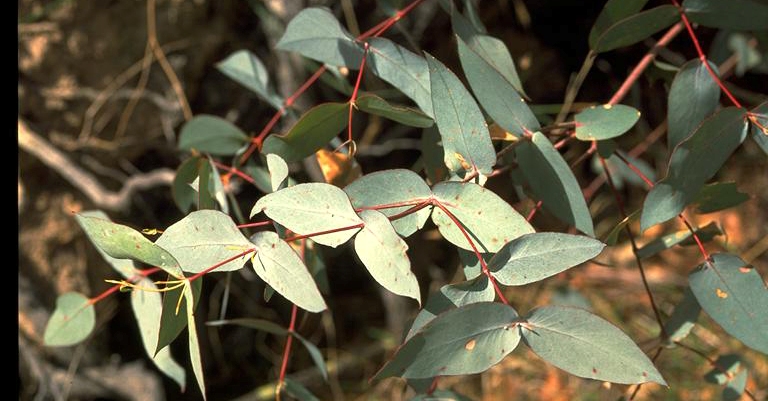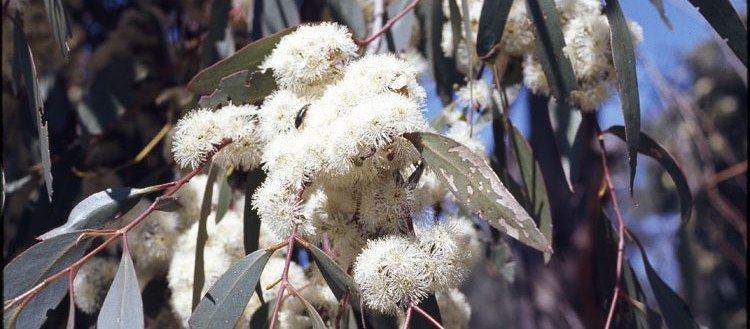Nutrition

Eucalypts, naturally, are
plants and therefore manufacture their own carbohydrate food
sources by photosynthesis.
However, as E.
dives prefers environments with poorer, stonier soil, this
organism has adaptations that allow it to meet its nutritive
needs. By forming
mycorrhizal relationships with fungi in its roots, for example,
the plant is able to draw in additional nutrients from the soil.
Tough
 bark
is a trademark of the eucalyptus trees, and this helps the broad leaf
peppermint retain moisture; interestingly, one study suggests
that E. dives
generally grows more conservatively when water and resources are
abundant than does another species in the same area,
E. mannifera (Austin
et. al., 2009). This
plant is vascular, meaning that it possesses tissues for
internal transport of water (xylem) and food (phloem).
bark
is a trademark of the eucalyptus trees, and this helps the broad leaf
peppermint retain moisture; interestingly, one study suggests
that E. dives
generally grows more conservatively when water and resources are
abundant than does another species in the same area,
E. mannifera (Austin
et. al., 2009). This
plant is vascular, meaning that it possesses tissues for
internal transport of water (xylem) and food (phloem).
Photos: (above and left) Ormay, P.
Sap from this tree carries photosynthesized carbohydrates and other nutrients to other parts of the plant, but other organisms may feed on the sap, as well. Energy storage in plants most often takes the form of starch, a complex carbohydrate allocated to various parts of the plant.
Dif further and learn about the eucalypts' Interactions with other organisms.
